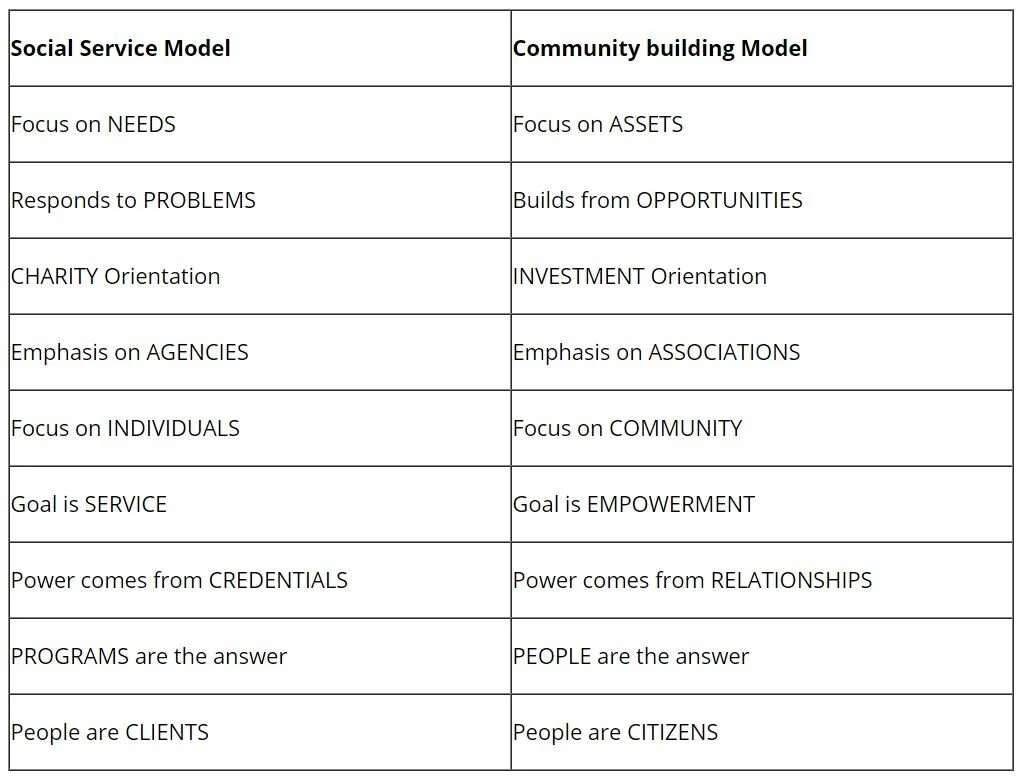
COMMUNITY DEVELOPMENT CERTIFICATE
Module 2: Fundamentals of Asset-Based Community Development
The ABCD approach “is at the center of a large and growing movement that considers local assets as the primary building blocks of sustainable community development.” By “[b]uilding on the skills of local residents, the power of local associations, and the supportive functions of local institutions, asset-based community development draws upon existing community strengths to build stronger, more sustainable communities for the future.”(1) Thus, the approach, in essence, claims to sponsor a shift from the social service model, which is in-line with traditional notions of patronage and charity, to a community-building model, in which productive interaction and capacity-building exercises spawn a sense of ownership and secure sustainability. The visual representation below articulates what this shift entails.(2)
To understand more about how this model works, please watch the short animated video here.(3) This video shows how the social service model can go wrong, and emphasizes the ways in which the community building model can be better and more sustainable in the long run.
One of the most foundational pillars of ABCD is the participation of community members in the re-creation of a better reality. Willing commitment to participation and investment, consequently, sponsor the potential for long-term ownership and perpetuation of progress.
“Sustainable solutions must understand the process of personal empowerment and social transformation in order for local ownership to take hold. Communities need to actively participate in the planning, execution, and maintenance of any development solutions that affect them. Since interior growth takes time and is difficult to achieve, any effective development intervention will integrate the perspectives it confronts and translate key messages in terms that can be understood and valued by the community. This allows the community to engage the work in ways that conform to local traditions and ways of thinking.”(4)
So what are the tools of ABCD and how are they put into practice to achieve an “effective development intervention”? Before answering this question, let us define sustainability.
Footnotes
(1) “Welcome to ABCD.” The Asset-Based Community Development Institute.https://abcdinaction.org/.
(2) Kretzmann, John P. Class Lecture. “The ABCD Approach & Temporary Volunteer Projects.” Northwestern University, Chicago, IL. June 2009.
(3) Stuart, G. "A video introducing asset-based community development (ABCD)." Sustaining Community. https://sustainingcommunity.wordpress.com/2018/10/15/abcd-video/. Posted 15 Oct. 2018.
(4) “Our Approach.” Foundation for Sustainable Development. http://www.fsd.org/.

